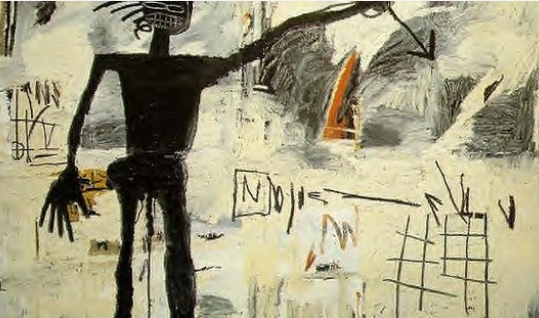Jean-Michel Basquiat, a prominent figure in the art world during the 1980s, is known for his raw and expressive paintings that often explore themes of race, identity, and socio-political issues. One of his most famous works, “Self Portrait 1982,” is a striking representation of the artist himself that delves into the complexities of self-perception and inner struggles.
Exploring the Artist’s Identity
In “Self Portrait 1982,” Basquiat presents himself as a figure with a fractured and fragmented identity. The use of bold lines, vibrant colors, and textural elements creates a sense of chaos and disarray, reflecting the artist’s own inner turmoil. Through his self-portrait, Basquiat explores the complexities of his own identity as a Black artist in a predominantly white art world, grappling with issues of race, representation, and authenticity.
Symbols of Struggle and Resilience
The painting is filled with symbols that hint at Basquiat’s own struggles and defiance in the face of adversity. The crown motif, a recurring symbol in his work, signifies his self-proclaimed status as a king and ruler of his own destiny. The use of skulls and skeletons alludes to themes of mortality and death, perhaps hinting at Basquiat’s own battles with addiction and mental health issues.
Layers of Meaning and Interpretation
“Self Portrait 1982” is a layered and multi-dimensional work that invites viewers to delve deeper into its hidden meanings and symbolism. By incorporating elements of street art, graffiti, and abstract expressionism, Basquiat challenges traditional notions of beauty and perfection, embracing imperfection and raw emotion instead. The painting acts as a mirror, reflecting the artist’s innermost thoughts and emotions while also inviting viewers to confront their own preconceptions and biases.
Conclusion
In “Self Portrait 1982,” Jean-Michel Basquiat offers a glimpse into his own psyche, revealing the complexities and contradictions that define his identity as an artist and as a human being. Through his use of symbols, colors, and textures, Basquiat creates a powerful and thought-provoking self-portrait that continues to resonate with audiences today. By uncovering the hidden meanings in this iconic work, we gain a deeper understanding of Basquiat’s artistic vision and his enduring influence on the art world.



